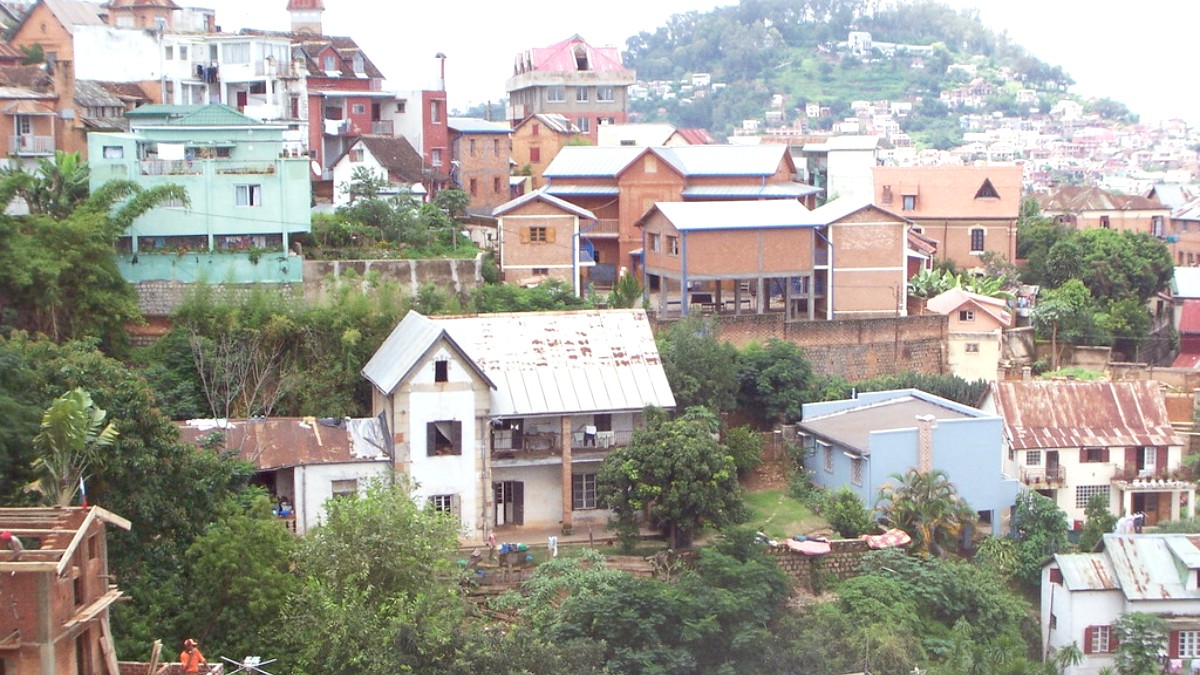
Madagascar
Malagasy cuisine developed from waves of migration and trade. Southeast Asian origins appear in the rice-based diet and the use of ginger and turmeric. African influences contribute stews and root vegetables. French colonial rule introduced European cooking techniques and ingredients. Arab traders brought spices and some dessert traditions.
The result is a distinct culinary identity, marked by fresh, local ingredients.
Meals are typically communal. Washing hands before eating is polite. Malagasy often eat with a spoon and fork. Finishing your plate shows appreciation. Tipping is appreciated but not mandatory.
Breakfast (sakafo maraina) is often light (coffee/tea with bread). Lunch (sakafo atoandro) is the main meal, around noon to 1 PM. Dinner (sakafo hariva) is lighter, usually around 7-8 PM.
Antananarivo functions as a melting pot, drawing influences from across Madagascar. The city's cuisine generally represents the highland style, stressing hearty stews and less seafood than coastal regions.
A national dish. Pounded cassava leaves slow-cooked with pork until tender.
Find it in most local restaurants (hotely).
A traditional Malagasy stew. It uses beef, pork, or chicken, combined with green leafy vegetables (anamamy or anamalaho), which confer an unique, slightly tingling sensation.
Served with a generous portion of rice. Widely available.
Brochettes: Grilled skewers of zebu, chicken, or pork, with chili sauce. Kitoza: Smoked or sun-dried strips of zebu meat.
Brochettes are popular street food. Kitoza is a savory snack.
Local rum infused with fruits, spices, or herbs. Three Horses Beer (THB) is the national beer, a popular local lager.
Toasted rice water (Ranon'apango) is a common non-alcoholic drink. Enjoy refreshing juices from local fruits like lychee, mango, and pineapple.
La Varangue offers sophisticated Malagasy and international cuisine in an elegant ambiance. Restaurant Le Saka (Hôtel Sakamanga) presents a diverse menu. The Yellow (Radisson Blu) delivers international dining.
Numerous options exist in Isoraka and around the city center. Kudeta (Sakamanga Hotel complex) is contemporary. Villa Vanille is known for its cozy atmosphere.
Hotely serve very affordable traditional Malagasy meals throughout the city. Analakely Market features many street food vendors.
Given the colonial past, French cuisine is prevalent, specifically in higher-end restaurants.
Many upscale establishments feature French dishes.
Many Chinese and Vietnamese restaurants deliver good value and Asian flavors. Some pizzerias and Italian restaurants exist, giving familiar options. Lebanese/Indian options are fewer but obtainable.
Variety present across the city.
Possible with rice, vegetables, eggs. "Vary sy Legumes" is common.
Rice-based dishes are suitable. Awareness stays low, carry translation.
Very limited availability outside specific communities.
Communication is main. Learn Malagasy/French phrases.
Local food-related events occur, often linked to harvests or regional specialties.
Ask locals or hotel for current information.
The "Hotely" experience presents genuine cultural immersion.
Simple, hearty meals alongside locals.
Beyond simply eating, explore Antananarivo's food culture through immersive experiences. This includes cooking classes, food tours, and visiting local farms for produce.
Consider day trips or longer excursions into the surrounding countryside to visit vanilla plantations or spice farms, deepening your grasp of Madagascar's agricultural bounty.
Possible to find dishes without meat, focusing on rice, vegetables, and eggs. Many Lasary (salads/pickles) are vegetarian. "Vary sy Legumes" (rice and vegetables) is a common option.
More challenging. Animal products (meat, fish, dairy) form a central part of many Malagasy dishes. Fresh fruits and vegetables are abundant and constitute good options.
Rice is naturally gluten-free, so many traditional rice-based dishes are suitable. However, cross-contamination risks exist, and awareness of gluten content stays low.
Some local tour operators or guesthouses might deliver informal cooking classes focusing on Malagasy cuisine.
Inquire locally for these opportunities.
Not directly within Antananarivo, but possible as day trips into the surrounding countryside to visit vanilla plantations or spice farms.
Deepen your grasp of agricultural bounty.
Local food-related events occur, often linked to harvests or regional specialties. Ask locals or your hotel for current information on such events during your visit.
The "Hotely" experience: eating simple, hearty meals alongside locals presents a genuine cultural immersion.
Beyond simply eating, explore Antananarivo's food culture through immersive experiences, including food tours that impart insights into ingredients and preparation methods.
Malagasy often eat with a spoon and fork, sometimes with hands for vary (rice). Finishing your plate shows appreciation for the food. Tipping is appreciated but not mandatory.